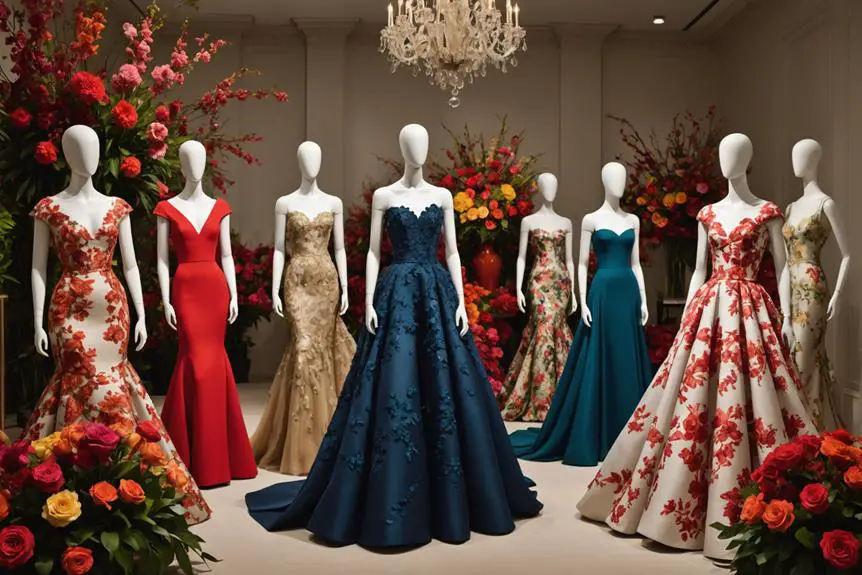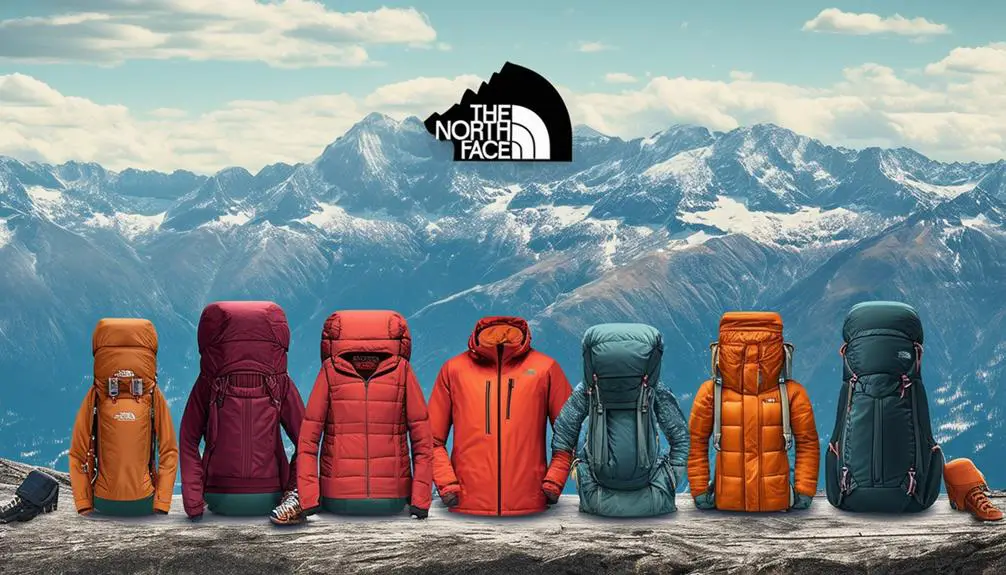Tennis player Jean Rene Lacoste was a ten time grand slam winner, dominating the sport throughout the 1920s and 1930s. Roland Garros was built in recognition of him and his French tennis team mates dominating tennis. During his time at the pinnacle of tennis, he was nicknamed ‘The Crocodile’, a nickname that would have much more significance than anyone could have predicted. Many stories circulate about why Rene was called ‘The Crocodile’, but the most commonly accepted is that he made a bet that he would win a match, and that if he did, his team captain would have to buy him an alligator skin suitcase they had seen in Boston. After Rene won the match, his friend Robert George would begin sewing in crocodiles into Lacoste’s clothing.
Capitalising on the exposure of the crocodile, Rene Lacoste and Andre Giller would take the crocodile emblem and use it as a logo to launch Lacoste, initially inventing the tennis polo shirt, specifically designed to be worn on court. This tennis polo was only available in white until 1950. Andre Giller was already the president and owner of France’s largest knitwear company, and Rene was already a renowned tennis player with big exposure. This combination immediately fired Lacoste into the forefront of tennis and fashion. In the 1950s a licencing partnership with US clothing manufacturer Izod helped expedite the global reach of Lacoste.
However, in 1993 the company reacquired the rights to exclusively distribute Lacoste in the USA. 1968 saw the company expanding into fragrances and then later into accessories and shoes over the 1980s and 1990s. In the last couple of decades, the popularity of Lacoste has rocketed. Modern, sleek designs introduced by designer Christophe Lemaire’s gave the brand a more upscale and preppy look, and continual sponsorships of tennis players and events like Novak Djokovic and Roland Garros have kept its reputation in tennis grounded.
Real Footage of Rene Lacoste Playing Tennis in 1929
How to tell if Lacoste is vintage from the logo
Lacoste has made a conscious effort in the last 10 years to maintain its brands appeal amongst younger shoppers. Recent collaborations with streetwear brands such as Golf le Fleur, Keith Haring and Supreme have helped this pursuit and have become very valuable on the resale market. In a way, they are case studies of the value of Lacoste’s brand image and logo. Whilst Lacoste is mostly known for its polo shirts, they have expanded into so many different product lines, and consistently used visible logos, they are an excellent point to start determining if your Lacoste is vintage.
1933 to 1984 Lacoste logo
- The first Lacoste logo was an emblem only logo
- It is quite a realistic depiction of a crocodile, in reference to Rene Lacoste’s nickname
- As you can imagine, printing and sewing this, especially in the early to mid 20th century, was difficult so a more simplistic version would be reverted to on many tags and designs
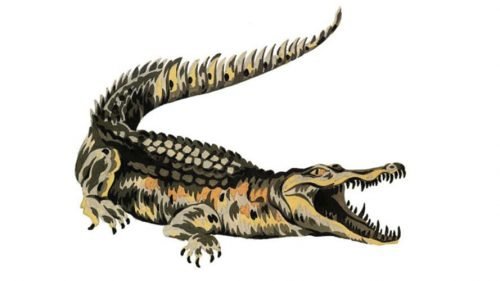
1934 to 1984 Lacoste logo
1984 to 2002 Lacoste logo
- The 1984 logo formally introduced the Lacoste text, as it had commonly been used on tags up to this point
- The alligator was simplified, again only being formally introduced as it had been used on products before up to this point
- And the text is blocky and capitalised
- These first two logos aren’t the best tools for identifying specific decades as products used them before the company officially changed them, but this changed in 2002
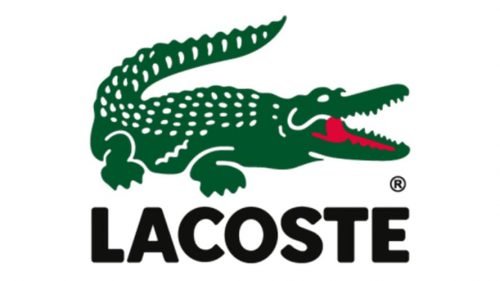
1984 to 2002 Lacoste logo
2002 to 2011 Lacoste logo
- The third Lacoste logo also triggered a pretty swift update on designs and tags, proliferating the new logo
- The structure of an emblem and text is the same
- The crocodile has subtle changes, with the white trim being toned back
- The font is very similar but notice how it is slightly more spaced on parts like the hole of the ‘A’ when compered to the previous logo
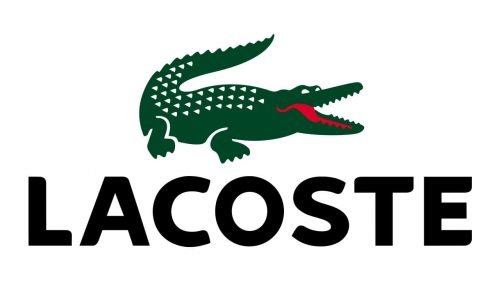
2002 to 2011 Lacoste logo
2011 to now Lacoste logo
- The current logo is a small advancement on its predecessor
- The structure and emblem are the same
- However, the font is slightly thinner, and the emblem is slightly smaller
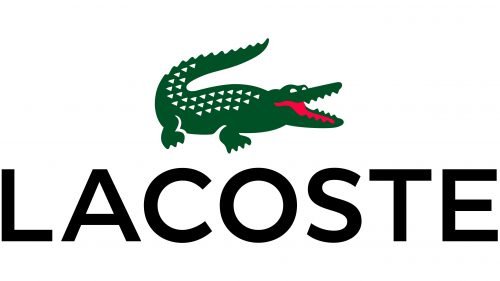
2011 to now Lacoste logo
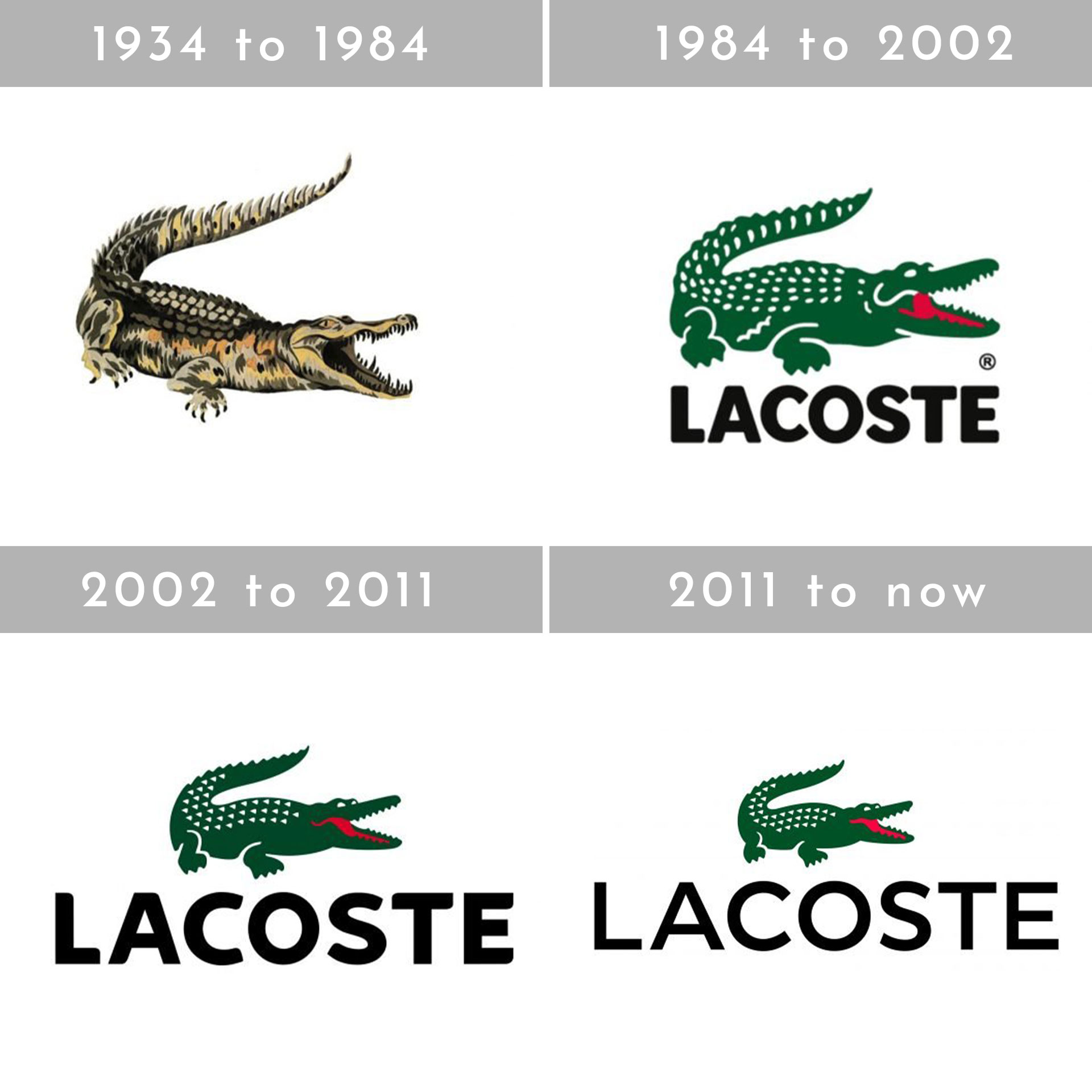
Vintage Lacoste logos through the years
How to tell if Lacoste is vintage from the neck tags
Lacoste has always put an emphasis on elegance. This constant focus on the product and an ethos around the product has given it longevity. However, in the vintage scene, a certain range of Lacoste products is most highly sought after, and that is Chemise Lacoste. However other tags are still valuable, but before you start comparing yours to the examples below, here’s a few things to look out for to see if your Lacoste is vintage.
As mentioned, Chemise Lacoste is highly sought after, and this is because it is mostly a 1980s and 1990s line of Lacoste and can be distinguished as it says Chemise Lacoste on the tags. Another thing to note is that Izod and Lacoste ended their partnership in 1993, so Izod Lacoste predates this. A third line to watch out for is Lacoste sport, which was launched in the mid 2000s. Lacoste Sport products usually used lighter materials and specified Sport on the tags.
Can’t figure out your vintage tags? Upload a picture on our vintage tag identification page, and we’ll help you out!
1960s vintage Lacoste tags
- 1960s Lacoste logos often included Izod if they were made in the USA or sold in the US market
- They are white labels white the emblem and text
- They did not include information about sizing, care, or country of manufacture

1960s Lacoste tags
1970s vintage Lacoste tags
- Tags at this time were mostly Izod Lacoste tags
- They have a pixelated crocodile emblem
- Although the one on the left is blue, this tag variation came in a few colour
- The text on these tags is often pixelated when its vintage as it was sewn in

1970s Lacoste tags
1980s vintage Lacoste tags
- The Chemise Lacoste tags were commonly used in the 1980s
- They specified the size and country of manufacture, which was often France
- They also had the logo
- Although not all tags included sizing, in became more common in this decade

1980s Lacoste tags
1990s vintage Lacoste tags
- The tag on the right is one of the final Izod Lacoste tags before Lacoste stopped working with Izod
- The black tags are completely sewn in and use a gold logo
- Neither specify sizing, but in the 1990s wash tags started to be included that included more information, so watch out for them

1990s Lacoste tags
2000s vintage Lacoste tags
- The Lacoste Sport line was launched, and new tags were created that had sizing information in a tab connected to the bottom
- Most tags still used number sizing, and were large white rectangles that has a minimal amount of information

2000s Lacoste tags
2010s vintage Lacoste tags
- Although these tags are similar in many ways to the 2000s ones, differences in the sizing of the logo can be seen
- And the new logo with a thinner font and simpler crocodile can be seen on the far right
- They also have become quite high quality and heavy material over years
- 2010 pieces will always be sold with wash tags that have a lot of care and composition information

2010s Lacoste tags
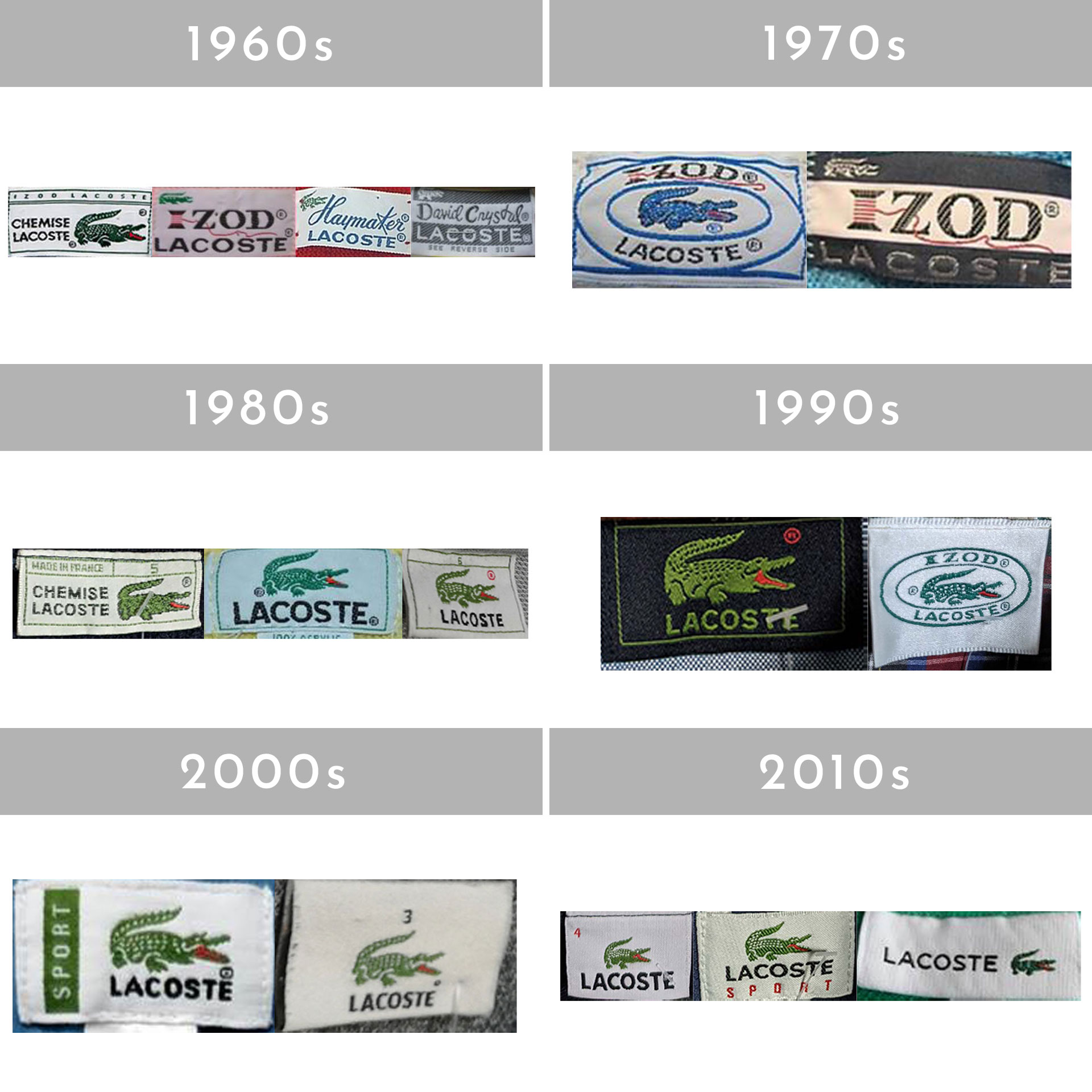
Vintage Lacoste tags through the years



